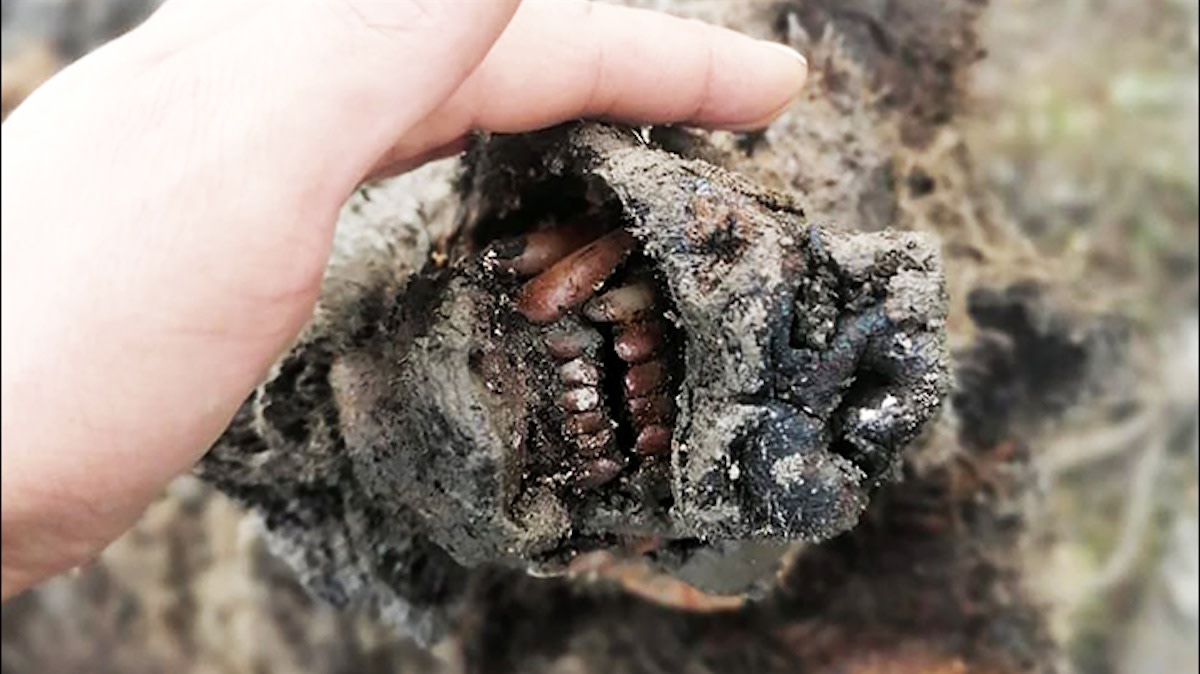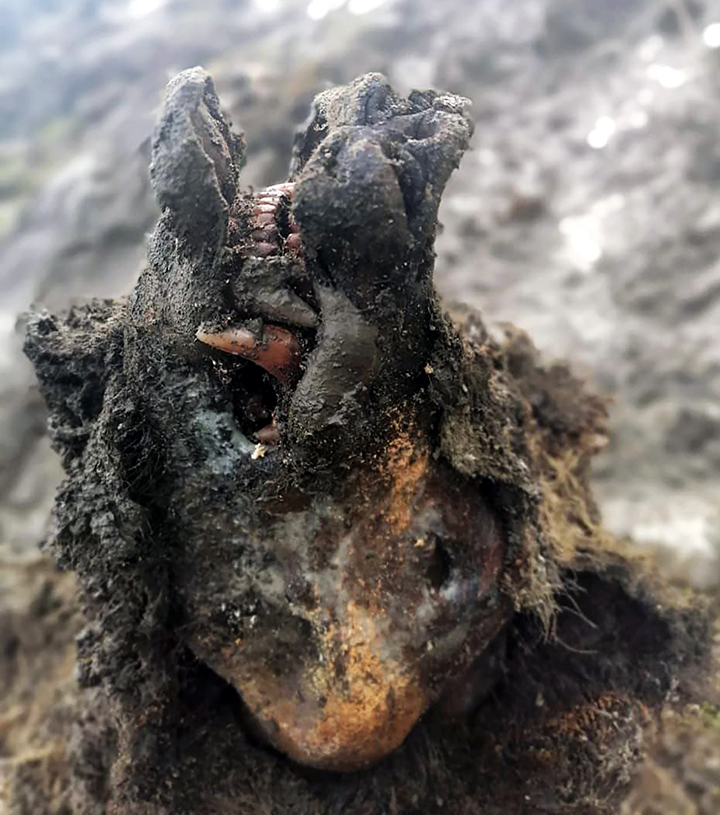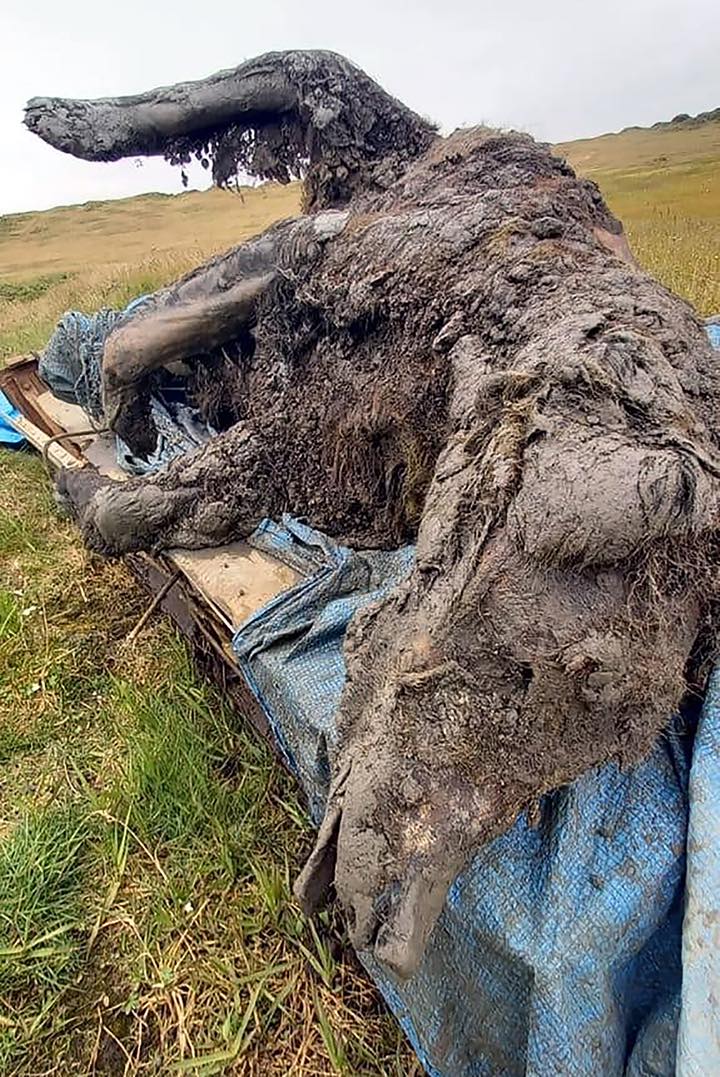
Russian scientists recently unearthed an unusual specimen—the intact remains of a long-extinct cave bear, providing a lens into understanding one of the largest predators to ever roam the planet.
The preserved carcass, revealed by melting permafrost and still barring its teeth, was discovered by native reindeer herders. Researchers at the North-Eastern Federal University in Yakutsk, Siberia, removed the bear in order to study it.
“Today this is the first and only find of its kind—a whole bear carcass with soft tissues,” said Dr. Lena Grigorieva, a scientist at NEFU, in a statement. “It is completely preserved, with all internal organs in place including even its nose. Previously, only skulls and bones were found. This find is of great importance for the whole world.”

Preliminary data suggest that the carcass could be between 22,000 and 39,500 years old. NEFU scientists will radiocarbon date the tissue as well as sequence the intact DNA material. The university, regarded as the one of the leading prehistorical mammal research institutions, claimed this discovery to be totally groundbreaking.
“The research is planned on as large a scale as in the study of the famous Maloyakhovsky mammoth,” Dr. Grigorieva said.

Cave bears (Ursus spelaeus) roamed across Europe and Asia during the Pleistocene epoch. Scientists believe they went extinct during the Last Glacial Maximum, when ice sheets extended to their furthest reach about 15,000 years ago. It’s believed that cave bears evolutionarily diverged from brown bears about 1.3 million years ago and they were similar to, if not slightly larger and stouter than modern day brown bears, with some specimens thought to grow beyond 2,000 pounds and 11 feet tall. Their name comes from the fact that many bones have been found in caves, leading scientists to believe that these bears often resided in caves year-round, not just hibernating in them. It has been suggested that this habit put them in conflict with Neandertals and anatomically modern humans, who also used caves for dwellings. Cave bear skulls have been discovered alongside apparently ritualistic human settings in Switzerland and France.
This bear was discovered on Bolshoy Lyakhovsky Island in the New Siberian Islands Archipelago between the Laptev and East Siberian seas on Russia’s north-central coastline. As climate change warms the Arctic, the permafrost layer is melting and revealing many such long-preserved specimens, including mammoths, wooly rhinos, and cave lions.
The discovery was first reported by the Siberian Times, which MeatEater has previously reported as containing fictional or exaggerated claims, but the veracity of this claim is not being questioned widely.
So, if you were wondering how long those bear roasts in your freezer will stay edible, here’s a guess to the extreme maximum duration. But we’d still recommend consuming within one or two years.
Feature image courtesy of North-Eastern Federal University.





